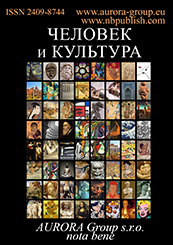Culture and cultures
Reference:
Yazykov D.S.
Street Art as a Tool for Social Dialogue: A Case Study of Tula
// Man and Culture.
2024. ¹ 2.
P. 1-17.
DOI: 10.25136/2409-8744.2024.2.69558 EDN: ZDCLLS URL: https://en.nbpublish.com/library_read_article.php?id=69558
 This work is licensed under a Creative Commons Attribution-NonCommercial 4.0 International License.
This work is licensed under a Creative Commons Attribution-NonCommercial 4.0 International License.|
Read the article
First Peer Review: Second Peer Review: |
EDN: ZDCLLS |

 Eng
Eng











 © 1998 – 2024 Nota Bene. Publishing Technologies. NB-Media Ltd.
© 1998 – 2024 Nota Bene. Publishing Technologies. NB-Media Ltd.




